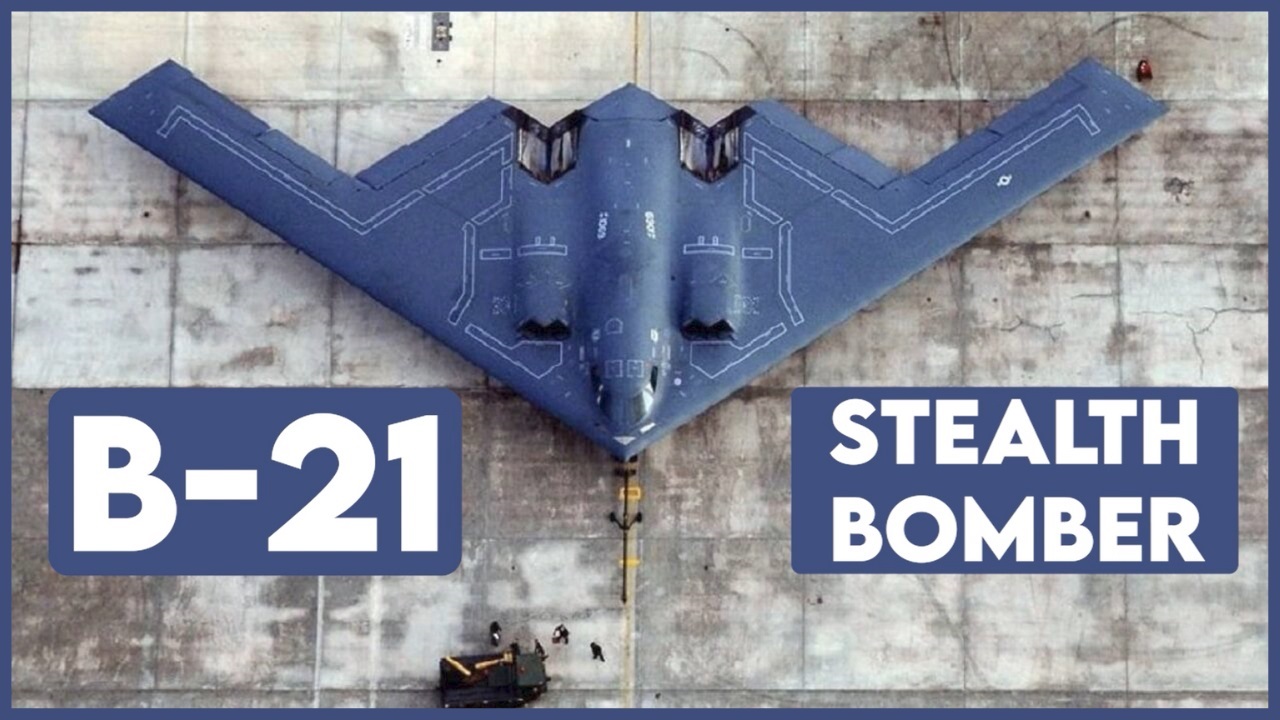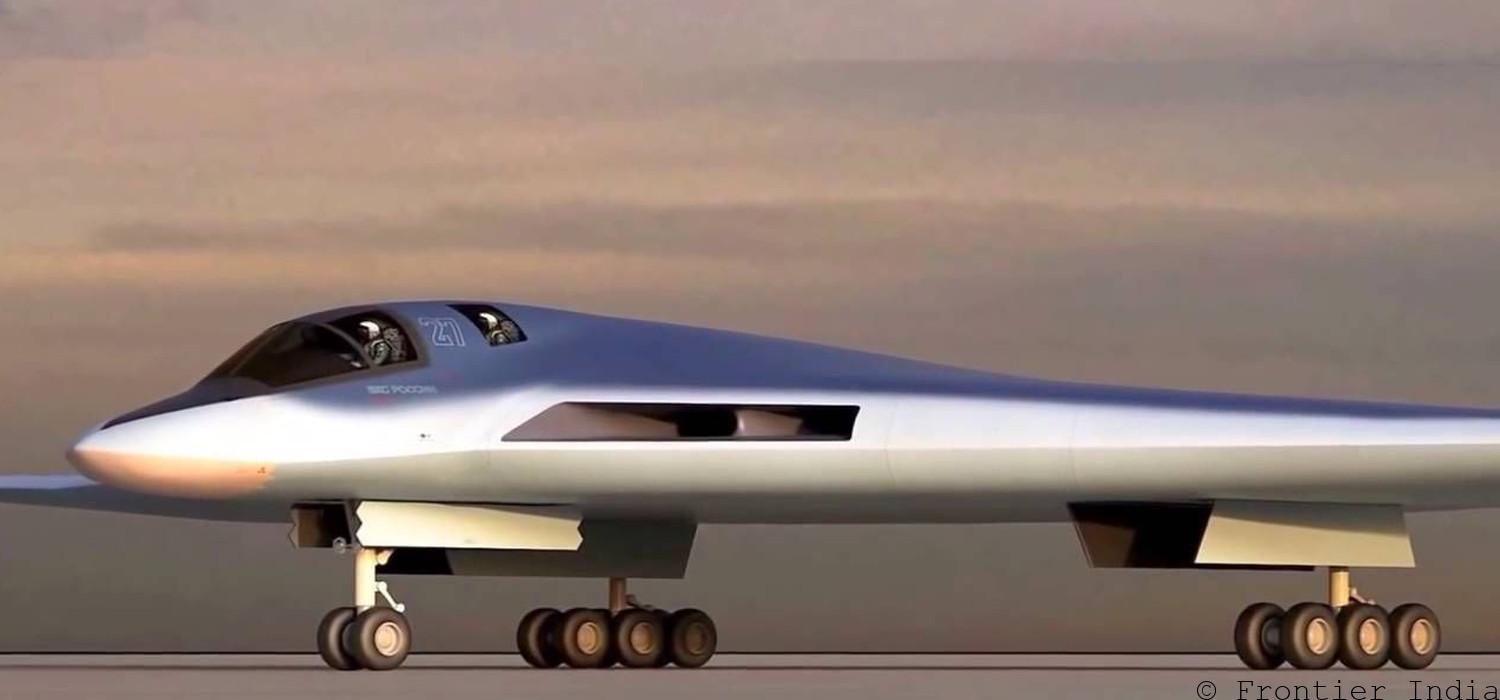By Air Marshal Anil Chopra (Retd)
The Xi’an H-20 bomber, which has been under development for more than a decade, is getting closer to its first flight. Chinese officials say “No Bottlenecks, All Problems Solved.”
Meanwhile, a few months back, the U.S. declared its B-21 Raider had entered low-rate production. An unnamed U.S. intelligence official claimed that China’s stealth bomber has encountered many engineering design issues and will probably be “nowhere as good” as American bombers. There are issues related to low observability, aero-engine, and advanced avionics. The bomber is technologically way behind the B-2 or B-21.
On the other hand, the U.S. Department of Defence (DoD) and the U.S. Air Force (USAF) have been highlighting Chinese advancements in air and space to seek greater defense budgeting and support for major aerospace programs.
The new bomber, combined with China’s advanced aerial missiles, would give China better penetration into the Western Pacific and the Himalayas. The new bomber would make an important part of the nuclear “triad” of the class with the U.S. and Russia.
Chinese Bombers
PLA Air Force (PLAAF) has operated hundreds of Il-28 bombers, including 300 licensed and produced the H-5 variant since 1965. All Il-28s are retired as of 2011.
The Xi’an H-6 is a twin-engine jet bomber, a license-built version of the Soviet Tupolev Tu-16, and is the primary Chinese bomber aircraft. China inducted Tu-16 in 1958. H-6’s first flight was in 1959, and joined service in 1969.
China built 230 aircraft, and around 180 variants are known to be in service. There are variants for nuclear delivery, a variant that carries six cruise missiles, Flight refueling aircraft (FRA), and electronic warfare aircraft, among others.
H-6 has an operational radius of action of just about 3000 km and, therefore, limited penetration capability. Being a large, slow platform, it will be detected early and intercepted. China has squeezed as much as it can out of the H-6 bomber; it is outdated now, so it is time to move on.
The Xi’an H-20 is a projected subsonic stealth bomber. It will be the first dedicated strategic bomber developed by China, the thought of which was revealed in September 2016.
The H-20 is expected to be a “flying-wing” design, have a payload capacity of around 10 tons of conventional or nuclear weapons, and a range of at least 8,500 km. The pictures in the public domain show serrated air intakes, cranked-kite wings, and foldable twin-tail surfaces that can be switched between horizontal tailplanes and V-tails.
In March 2024, during the second session of the 14th National People’s Congress, vice commander of the PLAAF, Wang Wei, indicated that H-20 will be revealed “very soon”. H-20s quality of stealth, avionics, and electronic suite are still a question mark. Even if the H-20 makes its first flight in 2025, it will be inducted no earlier than 2030 and take another decade to become combat-ready.

Current US Bombers
The U.S. has traditionally had a large strategic bomber fleet. They built nearly 750 eight-engine Boeing B-52 Stratofortress starting in 1952. The aircraft will continue to fly well past 2050.
They had over a hundred Rockwell B-1 Lancer swing-wing supersonic bombers starting in 1973. 45 B-1Bs are still in service and could be retired after 2036.
Northrop Grumman B-2 Spirit was the first stealth bomber introduced in January 1997. Twenty-one have been built to date. Two internal bays can carry nearly 23 tons of ordnance.
Payloads could be nuclear or conventional bombs or missiles. The B-2 is stored in a $5 million specialized air-conditioned hangar to maintain its stealth coating. Every seven years, this coating is redone.
The Northrop Grumman B-21 “Raider” stealth bomber, part of the Long Range Strike Bomber (LRS-B) program, took its first flight on 10 November 2023. Some describe the B-21 as “the world’s first sixth-generation aircraft,” with Joint All-Domain Command and Control technologies to share data across platforms.
Number 21 comes from the 21st Century, and the word “Raider” honors the American Doolittle Raiders who attacked Tokyo, Japan, on 18 April 1942. The B-21 is smaller and lighter than the B-2 and is designed with modular, open systems architecture to allow easy upgrades and, potentially, the ability to export components to foreign buyers.
Currently, there is a single test aircraft, but six aircraft are part of the low-rate production that has begun. It is expected to enter service by 2027. It is a smaller aircraft with a relatively lesser 9.1-ton payload.
The company expects DoD to place an initial order for 100 B-21s for the USAF and build up to an entire fleet of 175 to 200. In December 2022, the cost of the B-21 was estimated at $700 million per aircraft. The USAF estimates it will spend at least $203 billion over 30 years to develop, purchase, and operate a fleet of 100 B-21s.
The USAF also plans to acquire a new long-range fighter from its Next Generation Air Dominance program to escort the B-21 deep into enemy territory. The B-21 could fly 4,000 km without refueling. Clearly, stealth aircraft are not only expensive to purchase but also expensive to maintain.

Current Russian Bombers
The Tupolev Tu-95 “Bear,” a four-engine turboprop-powered strategic bomber and missile platform, first flew in 1952. Over 500 were built. It was first used in combat in 2015. It is expected to serve the Russian Aerospace Forces until at least 2040.
The Tupolev Tu-22M “Backfire” is a supersonic, variable-sweep wing, long-range strategic and maritime strike bomber introduced in 1972. Nearly 500 were built. The production stopped in 1993. Sixty-six aircraft are still in service. The aircraft are being upgraded to Tu-22M3 standard.
Eighty percent of avionics are replaced or upgraded. Service life will be extended to 40–45 years. The external hardpoints and internal weapons bay together can carry 24 tons of ordnance. It can carry four Kh-47M2 Kinzhal nuclear-capable hypersonic air-launched ballistic missiles, nine of which have been fired on targets in Ukraine last year.
The Tupolev Tu-160 “Blackjack” is a supersonic, variable-sweep wing nuclear-capable heavy Russian strategic bomber. It was introduced in service in 1987, and 41 were built. Ukraine inherited 19 Tu-160s from the former Soviet Union and subsequently handed over 8 Tu-160s to Russia in exchange for gas debt relief in 1999.
Two internal weapon bays can carry 45 tons of ordnance. In February 2020, the modernized Tu-160M performed its first test flight. President Putin has cleared a contract for ten upgraded Tu-160M2s. Production run has recommenced.
The Tupolev PAK DA is a next-generation Russian stealth subsonic strategic bomber under development to eventually replace the Tupolev Tu-95 in the Russian Air Force. It is targeted to enter service by 2027.
Known technical parameters indicate the capability to carry a maximum 30-ton load and have a range of 12,000-kilometre and endurance of 30 hours. Due to the ongoing Ukraine war, planned upgrades, and additional purchases of Tu-160M2s, the PAK DA program may be behind schedule.

Other Countries With Bomber Experience
The U.K. had the strategic “V-bombers” in the 1950s-60s. The jet-engine V Bomber force peaked in June 1964 with 50 Valiant, 70 Vulcan, and 39 Victor aircraft in service.
During the 1982 Falklands War, Vulcan bombers supported by Victor tankers carried out extremely long-range ground attack missions against Argentine positions. The last Victor unit was disbanded on 15 October 1993.
Some countries in West Asia operated Soviet/Russian bombers. India acquired 107 English Electric Canberra bombers and operated from the mid-1950s till they retired in 2007. Canberra performed exceedingly well in the wars in the Indian Sub-continent.
Advantages & Limitations Of Bombers
Bombers are normally large platforms. They have much larger real estate on board. This allows large fuel carriage and, in turn, combat range. They can carry a much larger quantity of weapons.
Carrying larger-sized cruise missiles means capability for very long-range stand-off precision strikes. Larger numbers of weapons mean the capability to address more targets in the same mission. They can carry their own air-to-air missiles (AAM). Large aircraft also have greater electric power generation capacity. This makes them great platforms for housing power-intensive Directed Energy Weapons (DEW).
Effective stealth greatly reduces the chance of their detection despite their large size. A few squadrons of stealth bombers may cost less than an aircraft carrier, deliver a larger punch at similar distances, and have much less need for their defense.
When compared to fighters, the bombers are expensive to acquire and maintain. The mission turn-around is longer. They are less agile, but agility is not at a premium for very long-range combat engagements. Being subsonic could have penalties if being chased by fighters or missiles.
The USAF has chosen to refurbish old bombers to increase their numbers. Some in the U.S. security establishment are debating the need for further investments in large aircraft carrier groups because of the increased threat from autonomous surface and sub-surface maritime crafts. However, the U.S. Navy is working on the next two large carriers.
H-20 Operational Implications
The development of a nuclear-capable bomber, along with China’s submarine and growing silo-launched nuclear missiles, will complete a nuclear “triad” of three disparate systems and elevate China to the same level of capability as the United States and Russia.
The bomber will be able to threaten U.S. targets within and beyond the Second Island Chain, which could include key U.S. military bases in Guam and Hawaii. However, to target the mainland U.S., it will have to travel a lot. Similarly, it could fly across the Himalayas with late detection and threaten targets in India.
Choices & Priorities For India
Today, the world faces strategic competition that could be more complex than in the Cold War years. Russia is trying to regain lost strategic standing. China is trying to catch up with the USA and, in many ways, has surpassed it in various areas.
Large Bombers are mainly used to carry heavier long-range cruise missiles in larger numbers. Stealthy designs will allow greater penetration. These aircraft will also have in-build aerial self-protection electronics and air defense missiles. Future bombers will have the capacity for powerful, directed energy weapons. That is one reason the three major powers are continuing to develop new bombers.
Indian Air Force (IAF) continues to be deficient in Fighter Squadrons at 31 vis-à-vis the authorized 42. IAF’s first priority for funding remains the fighter squadrons. All three countries operating bombers today have indigenous production and spare backup. India still has to master stealth in fighter aircraft. The high cost of bombers does not fit into the current defense Capital budget allotments of the IAF.
IAF never felt the need to acquire strategic bombers because of the current operational tasks, prioritization of acquisitions, and overall funding status. A stealth bomber is typically nearly 6-8 times costlier than a stealth fighter.
Just acquiring 6-8 bombers would be too expensive to maintain, adding huge infrastructure and spare parts costs and complications. A formation of just three IAF fighters can deliver equal to or more ordnance than the H-6 bomber.
Even China could not afford a stealth bomber till recently and therefore depended on Dong Feng’s series of ballistic missiles for nuclear deterrence. Similarly, India has its “Agni” series. However, even the latest ballistic missiles can easily be detected after launch. And unlike bombers, they are single use weapons.
Some American analysts have been suggesting that with carrier-killer hypersonic aerial missiles, larger surface ships and larger aerial platforms like AEW&C and FRA are highly threatened, and a stealth bomber would be a more worthwhile investment.
It is pertinent to mention that the Russian-guided missile cruiser ‘Moskva’ could be sunk with just two subsonic cruise missiles. No country can afford to lose an aircraft carrier. The drone/ cruise missile attacks by the Houthi rebels on US/NATO shipping in the Red Sea are indicative of the evolving future.
China and Russia realized they did not have global reach aspirations, technological backing, and funding like the “global policeman” USA and did not invest heavily in aircraft carriers. But they felt the importance of creating reach through stealth long-range bombers.
The Su-30 MKI has an unrefuelled combat range of around 1,500 kilometers and can carry over 8,000 Kg weapon load, including one BrahMos air-to-surface missile, or may carry around three smaller BrahMos NG variants.

A Su-30 MKI operating from Car-Nicobar Islands can reach the South China Sea with single refueling. The Rafale has an unrefuelled combat range of around 1,800 km and can carry 9,500 kg of external fuel and ordnance, including SCALP cruise missile.
Nuclear strike missions nowadays can also be carried out by fighter-bombers. In the case of India, the Su-30 MKI, Mirage 2000, Jaguar, and Rafale all have strategic nuclear delivery capability.
Can India’s fighter bombers, surface-to-surface missiles, and cruise missiles stand in for bombers remains a question. The major powers would not have developed bombers if it were so true.
Also, both India and China are large countries, therefore it may be of interest for India to have a bomber of its own. The bombers will carry a large complement of cruise missiles, both for land attack and anti-shipping roles.
They will be a great asset for the dominance of the Indian Ocean Region. One can expect India and China to maintain adversarial relations for some time to come. China will continue to use surplus resources to befriend India’s neighbors. A strategic bomber would be a significant deterrent.
Undoubtedly, being the fourth largest air force, and with the top three having stealth fighters/bombers, India may pursue bombers one day down the line. India currently needs funds for the fifth-generation fighters.
Acquiring bombers is not a priority for India for at least one decade. When India becomes a bigger power in the long run, it must develop bombers.
- Air Marshal Anil Chopra (Retired) is an Indian Air Force veteran fighter test pilot and is the former Director-General of the Center for Air Power Studies in New Delhi. He has been decorated with gallantry and distinguished service medals while serving in the IAF for 40 years. He tweets @Chopsyturvey
- Follow EurAsian Times on Google News





